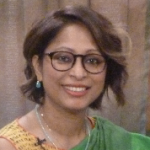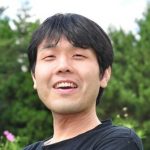Update on the United Nations Office on Disaster Risk Reduction’s (UNDRR) Effort to Reduce Deaths: Excerpts from two UN Reports 2016 and 2017
By: Nibedita S. Ray-Bennett and Hideyuki Shiroshita
In 2015, the United Nations ‘Sendai Framework for Disaster Risk Reduction’ adopted seven global targets, of which the first two targets are:
“(A) Substantially reduce global disaster mortality by 2030, aiming to lower average per 100,000 global mortality rate in the decade 2020-2030 compared to the period 2005-2015;
(B) Substantially reduce the number of affected people globally by 2030, aiming to lower the average global figure per 100,000 in the decade 2020-2030 compared to the period 2005-2015.”
This article summarises the UNDRR’s (previously known as UNISDR) update and activities towards achieving global targets A and B.
After the launch of the Sendai Framework in March 2015 in Sendai in Japan, by the resolution of “69/284 of 3 June 2015, the General Assembly established an open-ended intergovernmental expert working group comprising experts nominated by States and supported by the United Nations Office for Disaster Risk Reduction, with the involvement of relevant stakeholders, for the development of a set of possible indicators to measure global progress in the implementation of the Sendai Framework for Disaster Risk Reduction 2015-2030, coherent with the work of the Inter-Agency and Expert Group on Sustainable Development Goal Indicators.” The conclusion of the working group was completed in December 2016 and submitted to the General Assembly for consideration (UN General Assembly, 2016: 2/41).
On 2 February 2017, by the Resolution A/RES/71/276, the United Nations General Assembly endorsed the Report of the Open-ended Intergovernmental Expert Working Group (OIEWG) on Indicators and Terminology Related to Disaster Risk Reduction (A/71/644), and the recommendations for indicators and terminology relating to disaster risk reduction contained therein.
For global target A, the table below lists the indicators recommended by the OIEWG for evaluation against the Sendai Framework.
| No. | Indicator |
| A-1 | Number of deaths and missing persons attributed to disasters, per 100,000 population. |
| A-2 | Number of deaths attributed to disasters, per 100,000 population. |
| A-3 | Number of missing persons attributed to disasters, per 100,000 population |
In the report E/CN.3/2017/2, the Inter-Agency and Expert Group on Sustainable Development Goals Indicators (IAEG-SDGs) proposed the use of these same indicators for measuring disaster-related global targets of the SDGs 1, 11 and 13. This reinforces the importance of the Sendai Framework Targets and Indicators.
OIEWG defines ‘death’ as the number of people who died during the disaster, or directly after, as a direct result of the hazardous event. ‘Missing’ is defined as the ‘number of people whose whereabouts is unknown since the hazardous event. It includes people who are presumed dead, for whom there is no physical evidence such as a body, and for which an official/legal report has been filed with competent authorities’ (UNISDR, 2017: 8). ‘Note from the secretariat: The data on number of deaths and number of missing/ presumed dead are mutually exclusive, so no-one should be double counted’ (UNISDR, 2017: 8). For details on the computation methodology, please see the Report p8-12.
For global target B, the table below lists the indicators recommended by the OUEWG.
| No. | Indicator |
| B-1 | Number of directly affected people attributed to disasters, per 100,000 population. |
| B-2 | Number of injured or ill people attributed to disasters, per 100,000 population |
| B-3 | Number of people whose damaged dwellings were attributed to disasters |
| B-4 | Number of people whose destroyed dwellings were attributed to disasters. |
| B-5 | Number of people whose livelihoods were disrupted or destroyed, attributed to disasters. |
The Report of the OIEWG identifies that “[p]eople can be affected directly or indirectly. Affected people may experience short-term or long-term consequences to their lives, livelihoods or health and in the economic, physical, social, cultural and environmental assets.”
OIEWG defined ‘directly affected’ as ‘[p]eople who have suffered injury, illness or other health effects; who were evacuated, displaced, relocated; or have suffered direct damage to their livelihoods, economic, physical, social, cultural and environmental assets.’ Indirectly affected is defined as ‘People who have suffered consequences, other than or in addition to direct effects, over time due to disruption or changes in economy, critical infrastructures, basic services, commerce, work or social, health and physiological consequences’ (UNISDR, 2017: 19)
Recognising the difficulties of assessing the full range of all affected people (direct and indirect), the OIEWG recommended the use of an indicator that would estimate ‘directly affected’ as more feasible than collecting data on indirectly affected (p19-20). This indicator, while not perfect, uses widely available data and can be used consistently across countries and over time to allow measure against target B. From the perspective of data availability, feasibility of collection and measurability, the OIEWG recommended the use of a compound indicator based on the number of people injured or ill as a direct result of disasters (B-2) (UNISDR, 2017:19-20). For details on the computation methodology, please see the Report p22-26.
According to CRED, in the year 2018 there were 315 natural disasters, 11,804 deaths, over 68 million people affected, and US$131.7 billion in economic losses across the world. 79.8% of these deaths occurred in Asia.
For further details on targets A and B, please refer to the reports below:
- UN General Assembly (2016) Report of the open-ended intergovernmental expert working group on indicators and terminology relating to disaster risk reduction. UN General Assembly in its Resolution A/RES/71/276. https://www.unisdr.org/we/inform/publications/51748
- UNISDR (2017) Technical Guidance for Monitoring and Reporting on Progress in Achieving the Global Targets of the Sendai Framework for Disaster Risk Reduction: Collection of Technical Notes on Data and Methodology. UNISDR. https://www.unisdr.org/we/inform/publications/54970
- CRED (2018) Natural disasters: 2018. Brussels: Centre for Research on the Epidemiology of Disasters (CRED) https://www.cred.be/sites/default/files/CREDNaturalDisaster2018.pdf
Authors’ Bios:
 Dr Nibedita S. Ray-Bennett is an Associate Professor in Risk Management, Programme Director, External Examiner and Fellow of the Higher Education Academy. Nibedita joined the University of Leicester in 2012. Before joining Leicester, she had worked at Warwick, Northumbria and Cranfield Universities. Nibedita is a sociologist specialising in disaster risk reduction (DRR) and international development. Her research explores: i) understanding the complex nature of disaster and vulnerability in organisations and communities for effective disaster risk management and sustainability; ii) developing the capacity of actors and organisations for effective disaster risk governance, and iii) reducing disaster mortality and morbidity for human development. Nibedita is the author of Caste, Class and Gender in Multiple Disasters (2009, VDM Verlag) and Avoidable Deaths (2017, Springer Nature). Nibedita is the co-founder of ADN and she believes that by developing the capacities of actors, organisations and of general public – among other things, we can avoid disaster deaths.
Dr Nibedita S. Ray-Bennett is an Associate Professor in Risk Management, Programme Director, External Examiner and Fellow of the Higher Education Academy. Nibedita joined the University of Leicester in 2012. Before joining Leicester, she had worked at Warwick, Northumbria and Cranfield Universities. Nibedita is a sociologist specialising in disaster risk reduction (DRR) and international development. Her research explores: i) understanding the complex nature of disaster and vulnerability in organisations and communities for effective disaster risk management and sustainability; ii) developing the capacity of actors and organisations for effective disaster risk governance, and iii) reducing disaster mortality and morbidity for human development. Nibedita is the author of Caste, Class and Gender in Multiple Disasters (2009, VDM Verlag) and Avoidable Deaths (2017, Springer Nature). Nibedita is the co-founder of ADN and she believes that by developing the capacities of actors, organisations and of general public – among other things, we can avoid disaster deaths.
 Dr Hideyuki Shiroshita is an Associate Professor at Graduate School and Faculty of Societal Safety Sciences, Kansai University in Japan. He is also an affiliate member of the Disaster and Development Network (DDN) at Northumbria University, UK. His research interests are in the areas of disaster education, risk communication and Science, Technology and Society (STS). To overcome the conventional disaster education, which involves one-way knowledge transmission from experts on disaster risk reduction (DRR) to non-experts, the definition of disaster education is revisited from both DRR and pedagogical perspectives. He has also been served as an advisor of disaster education to several governmental committees. Currently, he is the chairperson of Osaka Prefectural committee for promoting safety and disaster education. Hideyuki co-founded the ADN with Nibedita and together they contributed a research paper to the UN’s Global Assessment Report 2019 on DRR.
Dr Hideyuki Shiroshita is an Associate Professor at Graduate School and Faculty of Societal Safety Sciences, Kansai University in Japan. He is also an affiliate member of the Disaster and Development Network (DDN) at Northumbria University, UK. His research interests are in the areas of disaster education, risk communication and Science, Technology and Society (STS). To overcome the conventional disaster education, which involves one-way knowledge transmission from experts on disaster risk reduction (DRR) to non-experts, the definition of disaster education is revisited from both DRR and pedagogical perspectives. He has also been served as an advisor of disaster education to several governmental committees. Currently, he is the chairperson of Osaka Prefectural committee for promoting safety and disaster education. Hideyuki co-founded the ADN with Nibedita and together they contributed a research paper to the UN’s Global Assessment Report 2019 on DRR.

